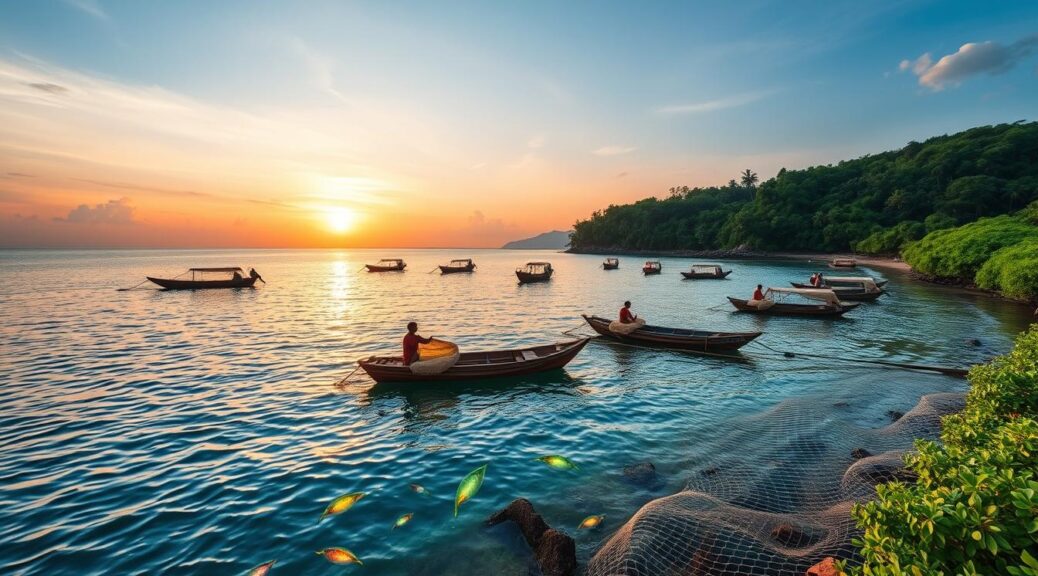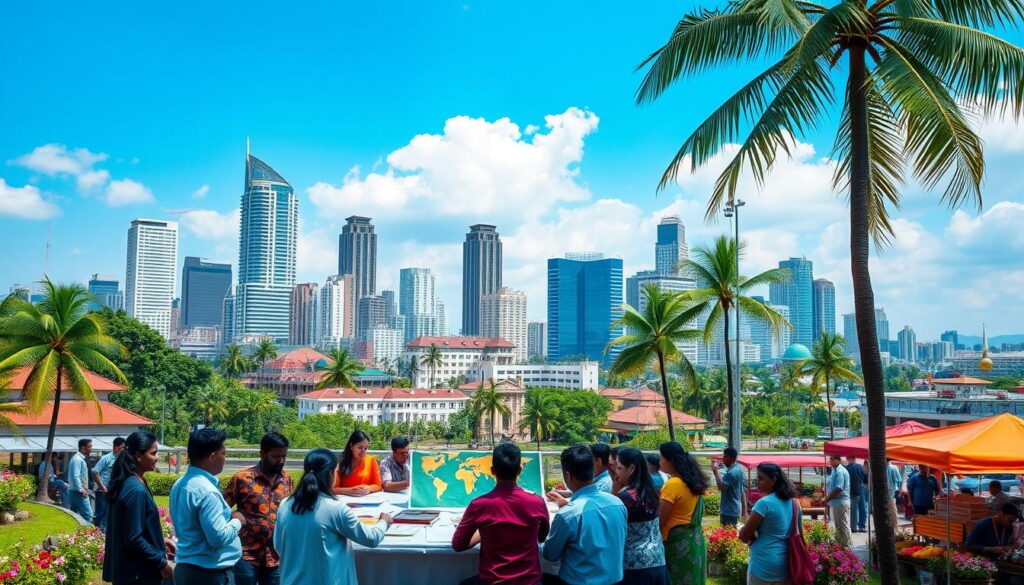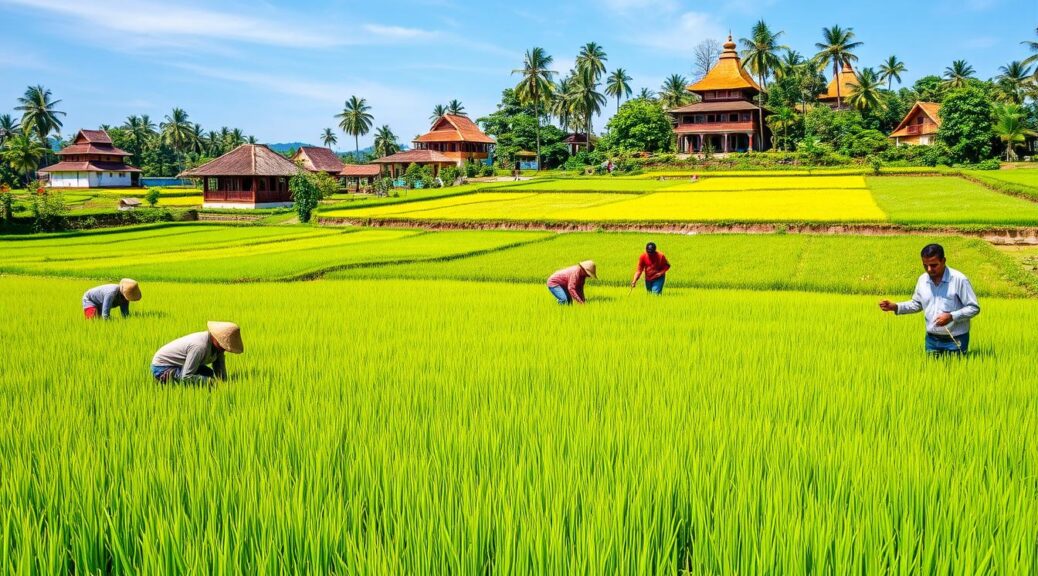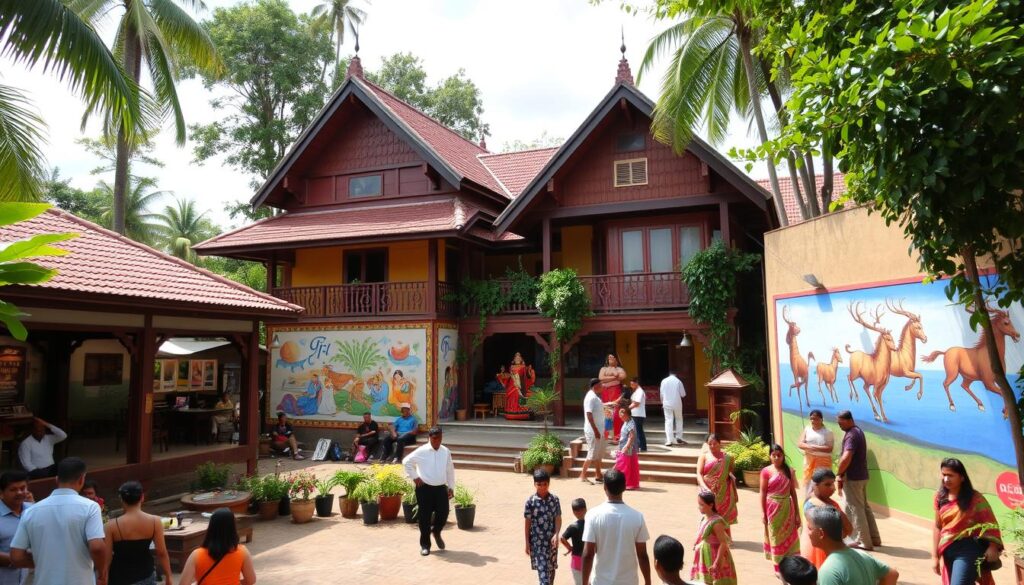Musk’s Starlink Wins Sri Lanka Licence | Satellite Internet
In a big step for telecommunications in Sri Lanka, the country now welcomes SpaceX’s Starlink. This marks a change in laws not seen in nearly 30 years. Sri Lanka is now a leader in South Asian broadband, thanks to Elon Musk’s vision.

SpaceX controls 60% of the world’s active satellites. This expansion is a big deal for the area. With Starlink in Sri Lanka, the night sky is now filled with over 6,000 satellites. This step not only improves broadband but also makes SpaceX a legend.
Starlink’s license in Sri Lanka is a big win. It promises better broadband and opens doors in nearby countries, like India. This move follows global space trends, showing how satellites connect us more than ever.
Starlink’s Expansion into South Asia with Sri Lankan Presence
Elon Musk’s Starlink initiative is a big leap in tech innovation, with new operations in Sri Lanka. This move shows a strong global interest in space and helps get rural areas in South Asia online. With over 6,000 satellites, Starlink plans to change how South Asia uses satellite internet, especially in hard-to-reach places.
Sri Lanka’s new telecom laws are key to this big step. They help foreign tech companies like Starlink start up easier. One big change is the 21st Amendment, which improves governance. It helps democracy too; more info here. This makes it easier for Starlink to launch, and may lead to more tech-friendly laws in nearby countries.
Elon Musk’s Strategic Move into Emerging Markets
By focusing on fast-growing places like Sri Lanka, Starlink aims for big growth. Bringing new tech here can close the digital gap and boost the economy. It fits Musk’s goal to make the internet available worldwide, especially where it’s most needed.
Impact of Sri Lanka’s New Telecommunications Legislation on Starlink’s Entry
New laws in Sri Lanka welcome tech companies. They support an open market and lower entry barriers for firms like Starlink. Thanks to these changes, Sri Lanka could lead tech innovation in South Asia.
The Promise of Improved Broadband Connectivity in Remote Regions
Starlink aims to improve internet access in Sri Lanka’s remote areas. This will help schools, hospitals, and businesses. Connecting these areas promises a new future of opportunity beyond physical limits, helping rural development.
This tech boost is set to transform education and healthcare in Sri Lanka. Plans are in place to mix tech with learning, explained here.
Musk’s Starlink Wins Sri Lanka Licence: A Milestone for SpaceX
Getting a licence for Starlink satellite internet in Sri Lanka is a big win for Elon Musk’s SpaceX. It marks a global impact with over 7,000 satellites orbiting the Earth since September 2024. Entering Sri Lanka’s market is key, especially with the country’s $37.5 billion debt and $503 million in debt payments by mid-2024.
SpaceX’s journey has been rapid, reaching 4 million users by September 2024 compared to 1 million in December 2022. Revenue jumped from $1.4 billion in 2022 to an estimated $6.6 billion in 2024. Still, Starlink’s creation cost at least $10 billion, facing challenges such as orbital congestion affecting astronomy.
The entry into Sri Lanka boosts SpaceX in the satellite net world and supports Sri Lanka’s tech and economic strategies. It’s a big step for Sri Lanka and SpaceX, bringing new opportunities for connectivity and growth.



